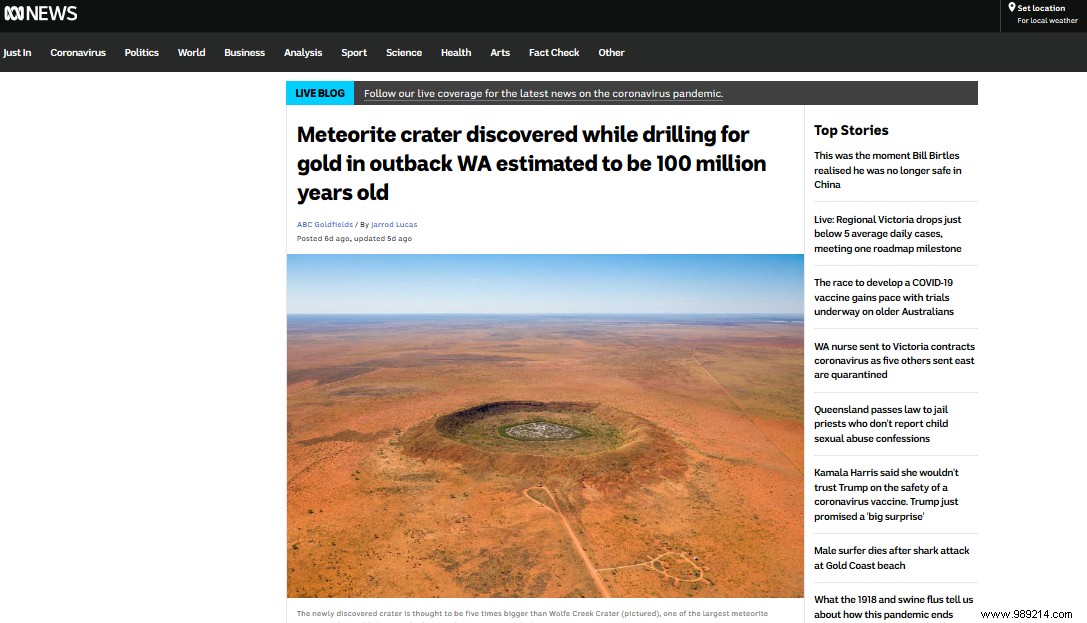In Australia, geophysicists working for a company prospecting for gold discovered a huge impact crater. The age of the crater has been estimated at around 100 million years. With a diameter of several kilometers, it is quite simply one of the most imposing craters in the world.
Jayson Meyers is a geophysicist with Evolution Mining, Australia's third largest gold mining company. Asked in an article published by ABC News on August 2, 2020, the person concerned announced a large-scale discovery. While panning for gold, the scientist and his team discovered one of the largest impact craters in the world. The latter is located about ten kilometers from the mining town of Ora Banda, northwest of Kalgoorlie-Boulder (Western Australia). According to Jayson Meyers, the famous crater would have a diameter of almost five kilometers , five times larger than the famous Wolfe Creek crater.

The researchers used gravimetric measurements as well as corings. The goal? Evaluate its age, which would be approximately 100 million years . Thus, this Australian crater would have formed during the Cretaceous, however before that of Chicxulub in Mexico. Remember, however, that the latter has a diameter of 100 km and that we know its role in the extinction of the dinosaurs.
Jayson Meyers recalled that the impact crater was discovered in a very flat region. Thus, it was filled in during geological time and was therefore concealed. In addition, the expert speculates that the Earth may have suffered more asteroid impacts than Science thought so far. The interested party speaks of a possible change of perspective with the discovery of new craters, discoveries that are also extremely rare. In the future, it will be a question of better evaluating the frequency of impacts and why these occur.
It is possible to estimate the size of the celestial body at the origin of the famous crater. Indeed, the cores testify to the presence of percussion cones . These are rock structures with divergent cone-shaped fractures. However, they are only found in the craters of meteorite impacts (or nuclear explosions). Thus, the object in question must have measured between 100 and 200 meters in diameter . Geophysicists evaluated the object by calculating the energy needed to dig a crater and the kinetic energy of the body at the origin of the impact, the speed of which is defined by gravity.